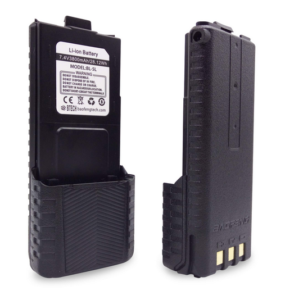
When it comes to off-roading, having a reliable and long-lasting power source for your GMRS radio is essential. There are many different types of batteries available, each with its own advantages and disadvantages. In this article, we will take a look at some of the most popular options for powering your GMRS radio on your off-road adventures.
First, let’s take a look at alkaline batteries. These batteries are widely available and relatively inexpensive, making them a popular choice among off-roaders. They also have a long shelf life, so they can be stored for extended periods of time without losing their charge. However, they do not have a very high energy density and they tend to lose power quickly, which means that you’ll need to bring along a lot of spare batteries if you plan to be out on the trails for an extended period of time.
Next, we have lithium-ion batteries. These batteries are lightweight and have a high energy density, meaning they can store a lot of energy in a small package. They also have a relatively low self-discharge rate, so they’ll retain their charge for longer periods of time. The downside of lithium-ion batteries is that they are more expensive than alkaline batteries, and they can be sensitive to high temperatures.
Another option for powering your GMRS radio is nickel-cadmium batteries. These batteries are durable, and have a relatively low self-discharge rate. They are also relatively inexpensive, making them a cost-effective option. The downside of nickel-cadmium batteries is that they have a relatively low energy density and they can be prone to memory effect, which means that they can lose some of their capacity over time.
Lead-acid batteries are another popular option for off-roaders. These batteries are durable and have a relatively low self-discharge rate. They also have a relatively high energy density, making them a good choice for running high-power devices such as radios. The downside of lead-acid batteries is that they are relatively heavy and they have a relatively short life span.
Finally, one of the newer options on the market is Lithium Iron Phosphate batteries, or LiFePO4 batteries. They have a high energy density, high discharge rate and they are less likely to catch fire compared to other lithium batteries. They also have a long life cycle and can be charged and discharged at high rates. They are also relatively lightweight, making them a good option for off-roaders. But like other batteries they are relatively expensive.
In conclusion, there are many different types of batteries available to power your GMRS radio, each with its own set of advantages and disadvantages. Alkaline batteries are widely available and relatively inexpensive, but they have a relatively low energy density. Lithium-ion batteries are lightweight and have a high energy density, but they are more expensive. Nickel-cadmium batteries are durable and inexpensive, but they can be prone to memory effect. Lead-acid batteries

